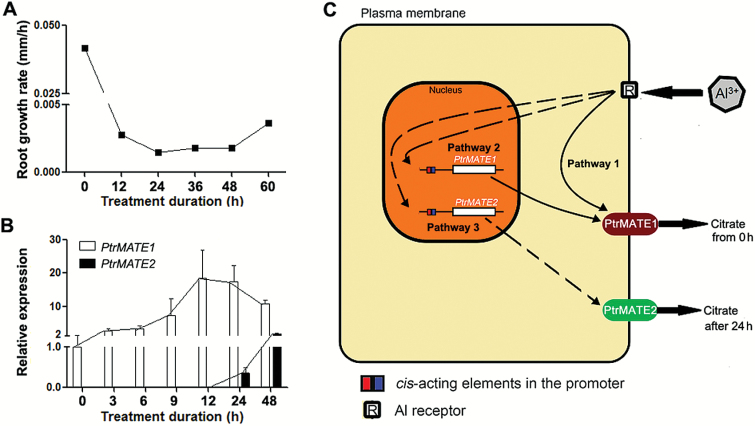Fig. 9.
Hypothetical model for PtrMATE transporter-mediated citrate secretion in response to Al stress in roots of Populus. (A) Root growth of wild-type plants in nutrient solution containing 500 μM Al3+ for 60 h. (B) Expression levels of PtrMATE1 and PtrMATE2 in poplar roots during 48 h under Al treatment. Expression of the poplar ubiquitin (UBQ) gene was used as a control. All results are shown as the mean expression ± standard deviation (SD) of three independent experiments. (C) Hypothetical model for Al-induced citrate secretion from roots of Populus. There are at least three pathways involved in the process. Pathway 1: the receptor (R) on the plasma membrane binds Al3+ and activates PtrMATE1 to transport citrate immediately out of the cell through the plasma membrane. Pathway 2: PtrMATE1 expression is induced by Al3+ and subsequently PtrMATE1 transports citrate out of the cell. Pathway 3: PtrMATE2 expression is induced by Al3+ at 24 h after treatment and subsequently PtrMATE2 transports citrate in cooperation with PtrMATE1.

